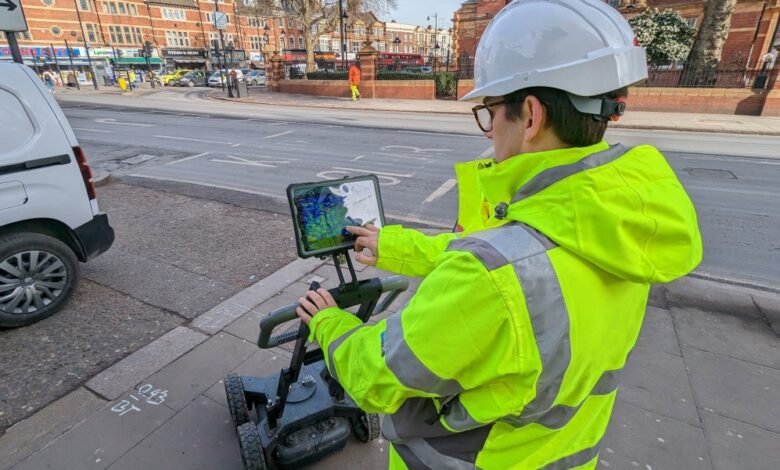Utility Surveyors UK: Ensuring Safe and Accurate Underground Mapping Across the Country

In the fast-paced world of construction, infrastructure development, and urban planning, knowledge of what lies beneath the surface is as critical as what is visible above. In the UK, the dense network of underground utilities—including water pipes, gas mains, electricity cables, and telecommunications lines—forms the backbone of daily life but also poses significant challenges for developers and contractors. Striking or damaging these underground services can lead to costly delays, safety hazards, and legal liabilities.
This is where Utility surveyors UK play a crucial role. They provide expert services in detecting, mapping, and managing underground utilities with precision and reliability. This article explores how utility surveyors across the UK contribute to safer, more efficient construction projects through accurate underground mapping.
What Do Utility Surveyors Do?
Utility surveyors specialize in locating and mapping underground infrastructure. Their work involves a combination of field survey techniques, advanced technology, and data interpretation to provide comprehensive information about buried services before any excavation or groundworks begin.
Key tasks of utility surveyors include:
- Locating underground utilities such as water, gas, electricity, telecom, and drainage systems.
- Mapping the precise location and depth of these services to create detailed plans and records.
- Using specialized technologies like Ground Penetrating Radar (GPR), electromagnetic locators, and sonars.
- Advising on safe excavation practices to avoid strikes or damage.
- Providing reports compliant with industry standards, such as PAS 128—the British Standard for underground utility surveys.
The Importance of Utility Surveyors Across the UK
The UK’s infrastructure is vast and varied, spanning urban centers, rural areas, historical sites, and new development zones. As a result, utility surveyors must adapt their approach to diverse environments and challenges.
1. Preventing Utility Strikes and Ensuring Safety
Utility strikes are a major cause of construction accidents, potentially causing gas leaks, electrical hazards, flooding, or communication outages. Utility surveyors help prevent these by delivering accurate subsurface information that guides safe digging.
2. Reducing Project Delays and Costs
Unforeseen underground services can lead to unexpected works, redesigns, or repair costs. Early detection and mapping by surveyors minimize these risks, enabling projects to run on time and within budget.
3. Compliance with Legal and Industry Standards
In the UK, regulations like PAS 128 require verified underground utility information for many construction projects. Professional utility surveyors ensure compliance, reducing liability and supporting smooth planning permissions.
4. Preserving Historical and Environmental Assets
UK sites often include heritage buildings or environmentally sensitive areas where invasive excavation is restricted. Utility surveyors use non-destructive technologies to gather essential data without damaging these assets.
Technologies Used by Utility Surveyors in the UK
Ground Penetrating Radar (GPR)
GPR is a widely used method that transmits electromagnetic pulses into the ground and records reflections from buried objects. It can detect both metallic and non-metallic utilities and is invaluable for mapping in complex urban environments.
Electromagnetic Locators (EML)
EML devices detect metallic pipes and cables by sensing their electromagnetic fields. This method is effective for identifying energized or passive metallic utilities.
Radio Frequency (RF) Locators
RF locators detect signals from active utilities or tracing devices placed in non-metallic conduits, helping pinpoint underground service routes.
Utility Records and GIS Integration
Surveyors combine field data with existing utility records and Geographic Information Systems (GIS) to produce comprehensive maps and digital models compatible with modern planning tools like BIM (Building Information Modeling).
The Survey Process
Utility surveying in the UK typically follows these steps:
- Site Assessment: Understanding the project requirements, site conditions, and existing records.
- Survey Planning: Selecting appropriate technology and techniques based on site complexity and utility types.
- Field Survey: Conducting physical scans using GPR, EML, and other tools.
- Data Analysis: Processing and interpreting collected data to distinguish utility types and exact locations.
- Reporting: Providing detailed plans, maps, and digital files with clear annotations, depth information, and confidence ratings according to standards.
- Advice and Recommendations: Offering guidance on safe excavation and risk mitigation.
Benefits of Hiring Professional Utility Surveyors in the UK
Enhanced Safety
Accurate utility location helps protect workers and the public by preventing accidental strikes and related hazards.
Increased Efficiency
With detailed underground maps, contractors can plan excavation routes, reduce unforeseen work, and accelerate project timelines.
Cost Savings
Avoiding damage to utilities reduces costly repairs, fines, and insurance claims, positively impacting the project budget.
Regulatory Confidence
Professional surveys support compliance with PAS 128 and local authority requirements, smoothing permit approvals.
Preservation of Infrastructure and Environment
Non-invasive surveying protects existing utilities and sensitive environmental or heritage sites.
- Aging and Incomplete Records: Older utility maps can be inaccurate or missing, especially in historic towns and cities.
- Mixed Urban and Rural Terrain: Surveyors must adapt methods for congested cities versus rural or undeveloped land.
- Non-Metallic Utilities: Plastic pipes and ducts require advanced detection methods like GPR, which demands expertise and modern equipment.
- Complex Infrastructure Networks: Multiple overlapping utilities can complicate interpretation and mapping.
Choosing the Right Utility Surveyor in the UK
Selecting a qualified and experienced utility surveyor is critical for project success. Here’s what to look for:
- Proven experience with UK infrastructure and standards.
- Use of up-to-date technology including GPR and EML.
- Compliance with PAS 128 and industry best practices.
- Ability to integrate data with CAD, GIS, and BIM software.
- Strong track record with references or case studies.
- Comprehensive reporting with clear, actionable information.
Conclusion
Utility surveyors UK play a pivotal role in modern construction and infrastructure development. By delivering safe, accurate, and comprehensive underground mapping, they protect lives, save money, and help projects proceed without interruption.
As the UK continues to invest in urban regeneration, transportation, and utility upgrades, the demand for expert utility surveying services will only grow. Whether you are managing a small residential build or a large-scale infrastructure project, engaging professional utility surveyors is an investment in safety, efficiency, and compliance.





